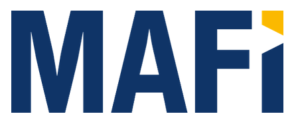
Today, carriers are deploying more antennas and radios than ever, and they’re attaching heavier antennas with integrated radio units to towers, putting space on the structures at a premium. “So, what we have tried to do is to optimize our mount designs to be able to accommodate the requirements of our customer, while keeping an eye on overall weight as the size increases with 5G antennas,” Lane said.
MAFi is an environmentally conscious company, Lane said. It uses regionalized manufacturing to ensure that local environmental3423 regulations and other requirements are met. It designs the mount to be lighter to reduce the amount of steel used and using regional manufacturers also helps to reduce the carbon emissions of shipping the product.
“Our design teams are very proud of the way they optimize the design of the mount to use the least amount of steel and to get the best performance,” Lane said. “So, the mounts are lighter – reduced in weight by 20 to 50 percent.”
MAFi is celebrating its 30 year anniversary this year, having been established in Mora, Sweden in 1992 by Pierre Bengtsson, who is its current CEO. Since then, it has grown to over 40 employees and it is still headquartered in Mora. It sells its products worldwide with offices in Stockholm, Shanghai, Nairobi and Dallas.
Around 2003, when 3G was being rolled out, MAFi began distributing the antenna mounts they designed across the Nordic countries. In 2011, MAFi began expanding across Europe, Asia, Africa and the Middle East, and in 2019, it broke into the Americas market.
“Back in the early days, installers got their mounts made locally at a metal shop to support their antennas and radios,” said Lane. “Bengtsson and his team came up with standardized mounts for radios and antennas and started selling them on a regional basis.”
MAFi has contract manufacturing partners in Sweden, China and Mexico. “We do the design, analysis and testing on our brackets to optimize the designs for the radios, antennas and other accessories,” Lane said. “Using more than one manufacturing facility helps us to diversify the supply chain, too.”
All MAFi brackets have defined load capacities. These numbers are arrived at by both calculation and physical testing of the weight they can carry on the offset pole, the rotational slip resistance at the offset pole, the rotational slip resistance at the parent pole, and the horizontal bending.
To ensure that an integrator chooses the mount that meets their needs, MAFI has created the Enhanced Site Innovation Calculation System (ESICS) or what is quickly becoming known as “The Bracket Checker”, a suite of online calculation tools for MAFI products.
“Along with designing, we’re innovating the process of advising our customers. This also gives them documentation to reduce the risk and safety hazards,” Lane said.
To check if the bracket will meet local wind loading requirements, the integrator will use the Bracket Checker. “MAFi Bracket Checker” helps you calculate the loads applied to the bracket and then checks that they don’t exceed the capacities. If they do, it helps you choose another solution that works,” Lane said.
Currently, it is only available for the U.K., Ireland, Denmark, Sweden and Norway, but it will be available in the U.S. in the coming months.
The Market for Mounts This Year and Into the Future
Globally, this year is going to be very significant for small cell mounts, according to Lane, but we anticipate accelerated growth next year in the Americas, because the market is focused on macro sites. MAFI has many products currently in its portfolio for small cells, and it’s working on more products in the run up to next year.
“We’re going to see the small cell market in the Americas really take off in 2023. It’s going to be a very solid piece of our business this year, but we see a lot more growth in 2023,” he said.
As cities become smarter, more antennas are going to be tucked into urban areas in various different places, including poles, rooftops and the sides of buildings – each requiring a mount.
“It’s an area that we have a lot of experience with, because over in Europe, they’ve been doing this for quite some time,” Lane said. “It is because their population is so dense, and the only space available demands using pole mounts, wall mounts and roof mounts.”
For more information, visit https://www.mafigroup.com/.
By J. Sharpe Smith, Inside Towers Technology Editor




Reader Interactions